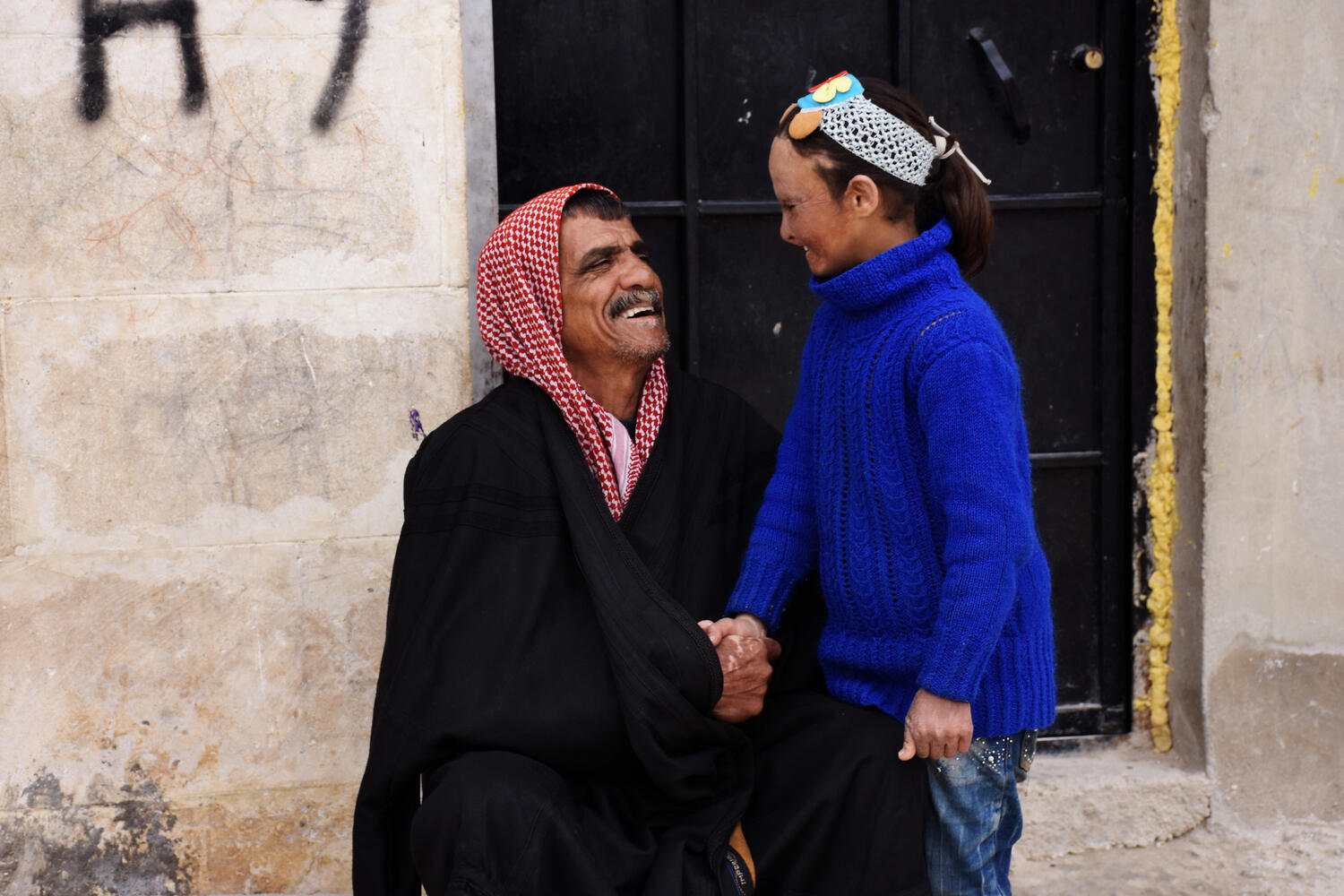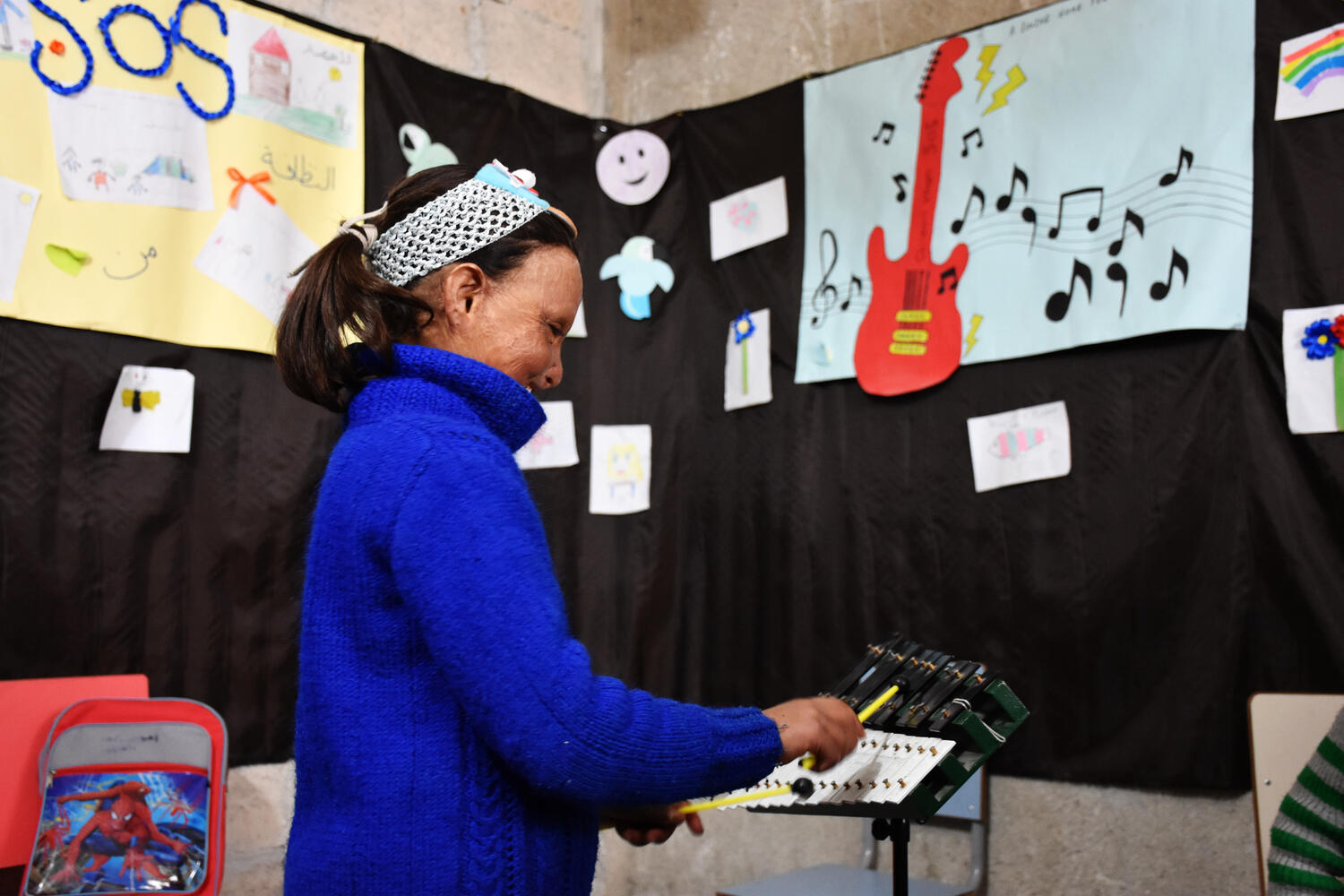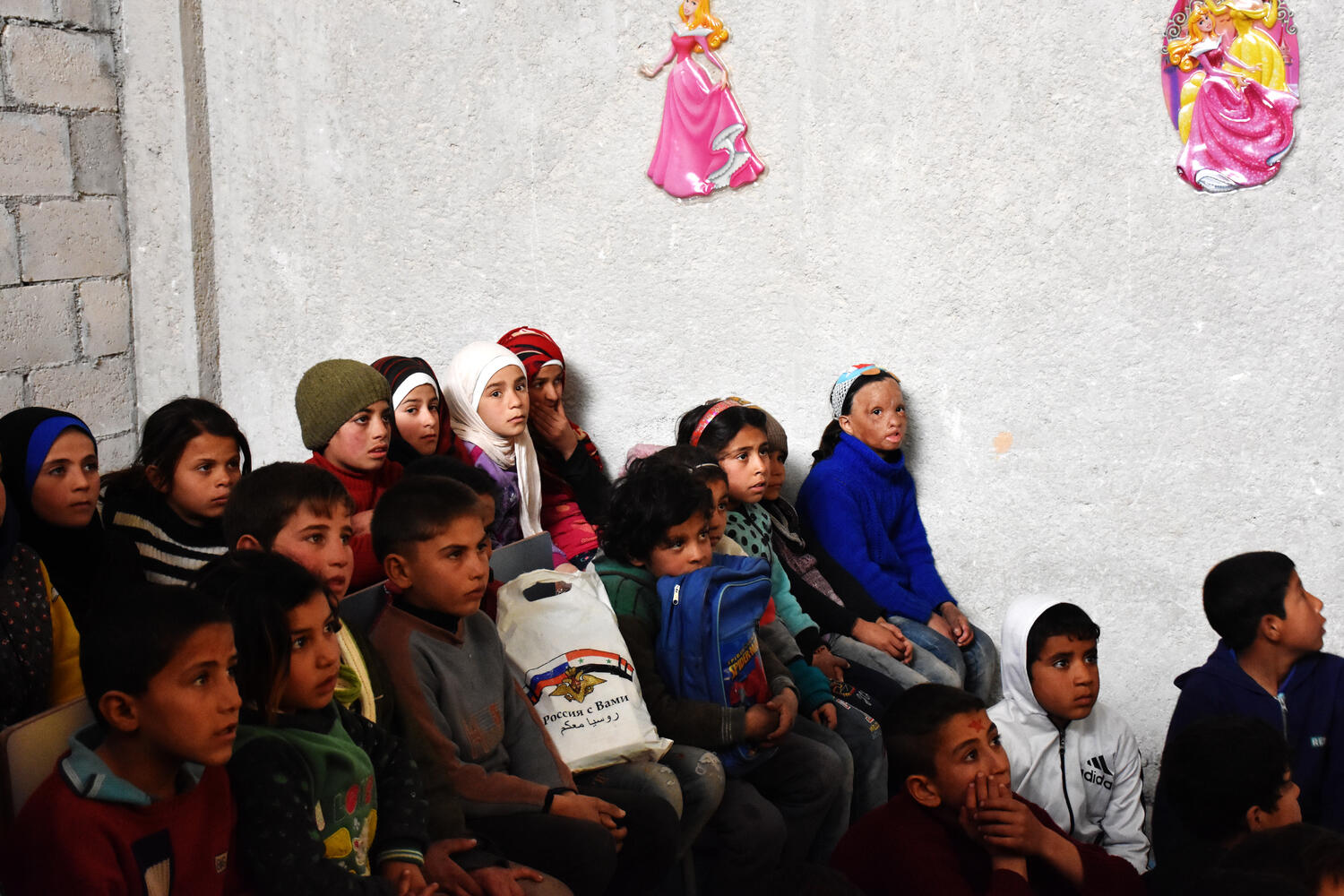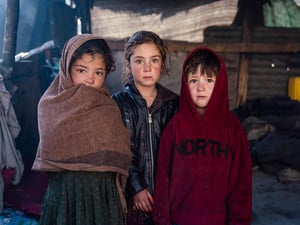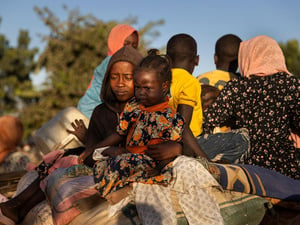Scarred but not broken by six years of conflict in Syria

Scarred but not broken by six years of conflict in Syria
On the outskirts of Aleppo, the shrieks and laughter of young children at play ring out from a schoolyard behind a long row of concrete storage units that serve as temporary shelters for Syrians displaced by the country’s long-running conflict.
Standing off to one side and watching the other children is Wafaa Keyari, an eight-year-old girl from the battered Sakhour district of eastern Aleppo. Wafaa doesn’t spend much time with the other children because of the way she looks. An explosion two years ago destroyed her home and severely burned her body and face.
“We had a gas cylinder in our home,” she explains. “When the house was shelled, the gas cylinder exploded. I was next to it. My father and I got burned and a man died.”
"When the house was shelled, the gas cylinder exploded. I was next to it."
Wafaa has thus far survived the brutal war in Syria, which is now approaching a tragic sixth anniversary. Alongside the hundreds of thousands killed or maimed in the fighting, 4.9 million people have sought refuge in neighbouring countries and a further 6.3 million have been displaced within Syria’s borders.
Wearing a bright purple scarf and a green woolen hat that hides the scars on her scalp, Wafaa smiles shyly and bobs up and down as she describes the immediate aftermath of the explosion.
“I was taken to hospital. I was awake and they treated me,” she recalls. “You know I was wearing wool clothes, like the ones I am wearing now, they got stuck to me. When they took me to the hospital, they were pulling them off my skin. It hurt so much, they didn’t even use anesthetic – they just pulled it off.”
Homeless, Wafaa, her parents and seven older siblings went to live with nearby relatives in east Aleppo. But as the four-year battle for Syria’s second city reached its destructive climax at the end of last year, the family fled in search of safety and came to the shelter in western Aleppo where they have lived for the past four months.
The historic city is calm for now, following a truce that saw the evacuation of armed groups and citizens trapped in conflict areas. But years of conflict have changed it beyond recognition.
Of the estimated 4 million former inhabitants of the city, fewer than 1.5 million remain. Thousands died, and many more are now refugees abroad. Wafaa and her family are among 400,000 people displaced within the city.
On a recent visit there, United Nations High Commissioner for Refugees Filippo Grandi was shocked by the level of destruction.
“There is very little that one can say – these ruins speak by themselves,” he said. “When you see children’s clothes hanging out of windows, kitchens cut in half by shells and rockets, real lives of people interrupted by war as it was happening – I think this will weigh very heavily on the conscience of the world for generations.”
Around 40 per cent of the city is destroyed beyond repair, and many other parts of Syria have suffered a similar fate. Twelve of the 18 neighborhoods in the city of Homs now form an apocalyptic landscape of flattened, bullet-ridden tower blocks and houses. They are devoid of any sign of life beyond the sounds of birds and the green shoots of plants beginning to grow out of the rubble.
“I think this will weigh very heavily on the conscience of the world for generations.”
“We must think that there are people here, some are returning to these ruins who need help, immediate help,” Grandi said. “They are cold, they are hungry, they need to work to earn some money. They need the elementary things of life.”
With no home to return to, Wafaa’s family must remain in their temporary shelter for now, surviving on the aid they receive from UNHCR, the UN Refugee Agency, and NGO partners. Despite everything, there is one bright spot for Wafaa. Fighting in Aleppo prevented her from starting school, but now she is enrolled in classes set up by NGOs at the shelter.
In the past month, Wafaa has also been to see doctors in Damascus, who are considering plastic surgery to repair some of the scarring. How much they can do is uncertain, but Wafaa is excited by the mere possibility. “I want to get better, and be happy in life and not be in need of anything,” she says.
Wafaa says she still remembers how she used to look before the explosion. Asked whether the incident had changed her at all, she paused for a moment before replying with a smile: “No. I am still the same nice girl.


